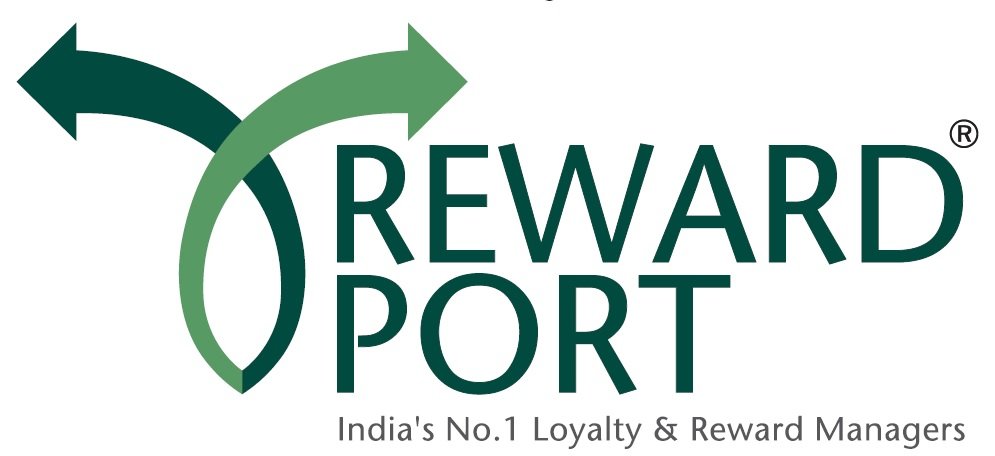Warning: What you’re about to read will challenge everything you believe about dealer loyalty in India.
The data is undeniable. The trend is accelerating. And if you’re not prepared, your best dealers might be gone by December.
Here’s the uncomfortable truth: while you’ve been celebrating your “successful” channel partner relationships, a silent revolution has been brewing in distribution networks across India. Dealers are defecting at rates not seen since the economic liberalization of the 1990s, and the companies losing them have no idea it’s happening until it’s too late.
This isn’t just about a few unhappy partners switching suppliers. This is a fundamental shift in how dealers evaluate, choose, and commit to business relationships. And the companies that don’t adapt to this new reality won’t just lose market share—they’ll lose their entire route to market.
The Shocking Numbers Behind the Exodus
The Scale of the Crisis
Recent industry analysis reveals a dealer defection rate that should terrify every business leader in India:
- 40% of channel partners plan to switch primary suppliers within 12 months
- 67% are actively evaluating alternative partnerships
- 78% report declining satisfaction with current incentive programs
- 89% believe their suppliers don’t understand their real business challenges
But here’s what makes these numbers truly alarming: 84% of companies experiencing dealer defection had no advance warning. Their partners smiled in meetings, hit quarterly targets, and then quietly signed with competitors.
The Hidden Cost Catastrophe
The financial impact extends far beyond lost sales:
- Average replacement cost per dealer: ₹3.2 lakhs
- Time to bring new dealers to full productivity: 8-14 months
- Revenue lost during transition periods: 23-45% of territory potential
- Market share erosion to competitors: 15-30% in affected regions
For a mid-sized company with 500 dealers, a 40% defection rate represents a potential loss of ₹64 crores in replacement costs alone—before counting lost revenue, market share, and competitive damage.
The Five Forces Driving Dealer Defection
Force 1: The Profitability Squeeze
The Problem: Traditional margin structures no longer support dealer business models in today’s economic environment.
Dealers face unprecedented cost pressures:
- Real estate costs increased 67% in tier-2 cities over three years
- Staff costs up 45% due to competition for skilled sales personnel
- Digital infrastructure requirements adding ₹2-5 lakhs annual expense
- Compliance and regulatory costs growing 34% annually
Meanwhile, supplier margin offerings remain flat or declining. Dealers are literally being squeezed out of profitability, forcing them to seek suppliers who understand and address these economic realities.
The Breaking Point: When dealer net margins fall below 12-15%, defection rates spike dramatically. Most suppliers don’t even track dealer profitability, making them blind to this critical risk factor.
Force 2: The Support Expectation Gap
The Problem: Dealers now expect business partnership, not just product supply relationships.
Modern dealers need:
- Digital tools and training to compete with e-commerce
- Market intelligence and customer insights
- Business development support and consultation
- Technology integration and automation assistance
Most suppliers still operate with 1990s support models:
- Product catalogs instead of market insights
- Order-taking instead of business consultation
- Reactive support instead of proactive partnership
- Generic programs instead of customized solutions
The Reality Check: 73% of dealers report their suppliers provide “adequate” product supply but “inadequate” business support. This gap is where competitors are winning defections.
Force 3: The Recognition Deficit
The Problem: Dealers feel invisible and undervalued despite generating significant revenue for suppliers.
The emotional disconnection is profound:
- 81% of dealers feel their suppliers don’t appreciate their contributions
- 76% report feeling like “just another number” in supplier systems
- 69% believe suppliers prioritize large corporate accounts over dealer partners
- 84% want more frequent and meaningful recognition beyond annual events
This isn’t about ego—it’s about business relationship fundamentals. Dealers who feel valued and recognized show 67% higher loyalty and 45% better performance than those who feel taken for granted.
Force 4: The Technology Abandonment
The Problem: Suppliers are failing to provide digital tools dealers need to remain competitive.
The digital divide is widening:
- 78% of dealers lack adequate CRM systems
- 71% struggle with inventory management technology
- 83% want mobile apps for business management
- 92% need integration with accounting and tax compliance systems
Competitors offering comprehensive digital support packages are winning dealers who desperately need to modernize their operations. Suppliers who view technology as “nice to have” rather than “must provide” are losing partners rapidly.
Force 5: The Flexibility Failure
The Problem: Rigid supplier policies clash with the agility dealers need to serve diverse local markets.
Indian markets demand flexibility:
- Regional product preferences vary dramatically
- Local pricing pressures require dynamic responses
- Seasonal patterns differ by geography and culture
- Customer payment terms need local adaptation
Suppliers with inflexible policies force dealers to choose between serving customers effectively and maintaining supplier relationships. Increasingly, dealers are choosing customers and finding new suppliers who understand local market realities.
The 5 Incentive Strategies That Stop the Exodus
Strategy 1: Profitability Partnership Programs
Beyond Margins: Total Business Economics
Instead of focusing solely on product margins, create comprehensive profitability partnerships that address dealers’ complete business economics.
Implementation Framework:
- Business Cost Audits: Help dealers identify and reduce operational expenses
- Efficiency Improvement: Provide systems and training that reduce dealer labor costs
- Technology Subsidies: Co-invest in digital tools that improve dealer profitability
- Performance-Based Bonuses: Reward efficiency improvements, not just sales volume
Success Example: A leading electronics manufacturer implemented “Profit Partnership” programs that included free inventory management software, shared marketing costs, and efficiency bonuses. Result: 89% dealer retention despite aggressive competitor recruiting.
Key Metrics:
- Track dealer net profitability, not just gross margins
- Measure cost-per-transaction improvements
- Monitor dealer ROI on time and capital invested
- Assess competitive immunity during pricing pressure
Strategy 2: Comprehensive Business Support Ecosystems
From Supplier to Strategic Partner
Transform from product provider to business development partner by creating comprehensive support ecosystems that address dealers’ growth challenges.
Support Framework Components:
- Market Intelligence: Regular reports on local market trends, competitor activity, and customer insights
- Business Consultation: Quarterly business reviews focused on dealer growth, not just supplier performance
- Training and Development: Sales training, business management education, and digital literacy programs
- Technology Platform: Integrated tools for inventory management, customer relationship management, and financial tracking
Implementation Approach:
- Assign dedicated business development managers to dealer segments
- Create regional support centers with local market expertise
- Develop dealer advisory councils for program feedback and improvement
- Establish peer-to-peer learning networks among dealers
Measurement Criteria:
- Dealer business growth rates
- Market share expansion in dealer territories
- Dealer customer satisfaction scores
- New product launch success rates
Strategy 3: Dynamic Recognition and Status Programs
Making Dealers Feel Valued and Visible
Create recognition programs that provide both emotional satisfaction and business value, addressing dealers’ need for appreciation and status.
Multi-Layered Recognition Structure:
- Real-Time Acknowledgment: Instant recognition for achievements through digital platforms
- Peer Recognition: Systems where dealers can acknowledge each other’s successes
- Customer Recognition: Programs where end customers can recognize exceptional dealer service
- Community Recognition: Public acknowledgment within local business and social communities
Status and Privilege Programs:
- Exclusive Access: Early product previews, exclusive events, VIP treatment
- Advisory Roles: Include top dealers in product development and strategy discussions
- Mentorship Opportunities: Enable successful dealers to mentor and guide newer partners
- Industry Leadership: Support dealers in becoming thought leaders in their markets
Business Value Integration:
- Recognition tied to business outcomes, not just sales volume
- Rewards that enhance dealer business capabilities
- Public relations support that builds dealer market reputation
- Networking opportunities that create business development possibilities
Strategy 4: Digital Empowerment Platforms
Technology as Competitive Advantage
Provide comprehensive digital tools that make dealers more efficient, competitive, and profitable than they could be independently.
Core Platform Components:
- Customer Relationship Management: Tools for managing customer interactions, sales pipeline, and service delivery
- Inventory Management: Real-time inventory tracking, automated reordering, and demand forecasting
- Financial Management: Integration with accounting systems, tax compliance, and financial reporting
- Market Intelligence: Data analytics, customer insights, and competitive analysis tools
Advanced Features:
- Mobile-First Design: All tools optimized for smartphone usage
- Offline Capability: Core functions work without internet connectivity
- Integration APIs: Connect with dealer’s existing systems and processes
- Customization Options: Adapt to local business practices and preferences
Support Infrastructure:
- Training Programs: Comprehensive education on platform usage and optimization
- Technical Support: Dedicated help desk and troubleshooting assistance
- Regular Updates: Continuous platform improvement based on dealer feedback
- Best Practice Sharing: Forums and resources for dealers to learn from each other
Strategy 5: Adaptive Flexibility Frameworks
Local Market Responsiveness
Create program structures that adapt to local market conditions while maintaining overall consistency and fairness across the dealer network.
Flexibility Dimensions:
- Product Mix Adaptation: Allow dealers to customize product offerings based on local demand
- Pricing Flexibility: Provide guidelines and tools for dynamic pricing responses to local competition
- Payment Terms: Adapt payment and credit terms to local business practices and economic conditions
- Marketing Customization: Enable local adaptation of marketing messages and promotional activities
Implementation Structure:
- Regional Management: Empower regional managers to make local adaptations within defined parameters
- Rapid Response Systems: Fast decision-making processes for dealer requests and market changes
- Local Partnership: Collaborate with dealers on market-specific strategies and solutions
- Continuous Feedback: Regular collection and response to dealer requests for program modifications
Control Mechanisms:
- Performance Standards: Maintain consistent performance expectations while allowing tactical flexibility
- Fairness Protocols: Ensure adaptations don’t create unfair advantages or disadvantages
- Audit Systems: Regular review of local adaptations to ensure they serve business objectives
- Best Practice Sharing: Spread successful local innovations across the broader dealer network
Implementation Roadmap: Stopping the Exodus
Phase 1: Emergency Assessment (Weeks 1-2)
Immediate Actions:
- Conduct rapid dealer satisfaction surveys across all segments
- Analyze dealer profitability and identify at-risk partners
- Review competitor activities and dealer recruitment efforts
- Assess current program effectiveness and gap identification
Critical Questions:
- Which dealers are most vulnerable to competitive recruitment?
- What specific dissatisfaction factors are driving defection risk?
- How do our programs compare to competitive offerings?
- Where are we failing to meet dealer expectations?
Phase 2: Rapid Response Deployment (Weeks 3-6)
Quick Wins:
- Launch enhanced communication programs with at-risk dealers
- Implement immediate improvements to existing incentive structures
- Begin deployment of basic digital tools and support resources
- Establish dedicated dealer success management teams
Stabilization Focus:
- Address the most critical dealer concerns immediately
- Provide emergency support to dealers considering defection
- Communicate upcoming program improvements and investments
- Create temporary bridge programs while developing comprehensive solutions
Phase 3: Comprehensive Program Launch (Months 2-4)
Full Strategy Implementation:
- Deploy all five incentive strategies with comprehensive support systems
- Launch technology platforms and training programs
- Implement new recognition and status programs
- Establish regional flexibility frameworks and support structures
Change Management:
- Conduct extensive dealer training and onboarding for new programs
- Provide comprehensive support during transition periods
- Monitor adoption rates and address implementation challenges
- Collect continuous feedback and make real-time improvements
Phase 4: Optimization and Scale (Months 5-8)
Performance Enhancement:
- Analyze program effectiveness and optimize based on results
- Scale successful elements across broader dealer networks
- Develop advanced features and capabilities based on dealer feedback
- Create long-term sustainability and continuous improvement processes
Competitive Positioning:
- Monitor competitive responses and maintain program advantages
- Develop next-generation capabilities that create lasting competitive moats
- Build dealer loyalty that withstands future competitive pressures
- Establish market leadership in dealer partnership innovation
Measuring Success: KPIs That Matter
Primary Success Indicators
Retention Metrics:
- Dealer retention rate (target: 95%+ annually)
- Time to dealer productivity for new partners
- Dealer satisfaction scores across all program dimensions
- Competitive immunity during recruitment periods
Business Performance:
- Dealer profitability improvement
- Market share growth in dealer territories
- Revenue per dealer and territory performance
- New product launch success rates through dealer channels
Engagement Quality:
- Program participation rates and engagement depth
- Digital platform adoption and usage metrics
- Training completion and certification rates
- Peer-to-peer interaction and knowledge sharing
Early Warning Systems
Risk Indicators:
- Declining dealer communication frequency
- Reduced participation in voluntary programs
- Competitor contact frequency with dealers
- Performance decline patterns that predict dissatisfaction
Proactive Intervention Triggers:
- Automatic alerts when dealer metrics indicate defection risk
- Regular health check assessments and relationship audits
- Competitor intelligence gathering and response planning
- Continuous dealer feedback collection and trend analysis
The Strategic Imperative: Act Now or Lose Forever
The dealer exodus of 2025 isn’t a prediction—it’s happening now. Every day you delay implementing these strategies, competitors are winning your partners with exactly the approaches outlined here.
But here’s the opportunity hidden within the crisis: companies that move quickly to implement comprehensive dealer partnership strategies won’t just stop defections—they’ll attract the best dealers from competitors who remain stuck in outdated relationship models.
The choice is stark: evolve into a true partner that dealers choose to work with, or remain a supplier that dealers feel forced to tolerate until better options appear.
The dealers are deciding right now. The question is whether you’ll influence that decision or simply react to it.
Ready to stop the exodus and start building unbreakable dealer partnerships? RewardPort’s comprehensive channel incentive solutions address all five forces driving dealer defection while


